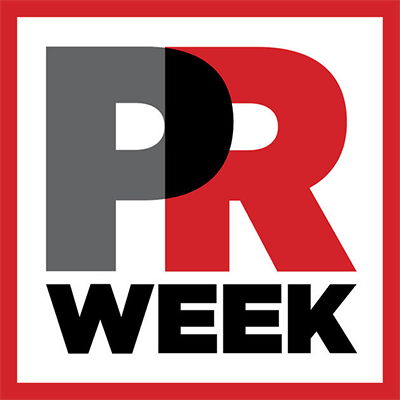Also see Marian’s blog posts on the Huffington Post and Forbes.com.

“Euro RSCG’s Salzman on 2010 Trends: ‘Co-creating the News,”
PRNewser, Dec. 30, 2009
PRNewser covers Marian’s comments on the transformation of the ad industry in her appearance on CNBC’s “Power Lunch”: “It’s not going to be ‘paid’ anymore, it’s going to be ‘persuade,’” she said. “It’s all about being part of wherever the news is being created, co-creating the news.”

“Fewer Actors, Other Trends You’ll See in 2010,”
The Wall Street Journal, Dec. 28, 2009 (and The Wall Street Journal Asia, Dec. 29, 2009)*
Advertising is experiencing the effects of the recession in profound and dynamic ways. With experts predicting that the ad industry will be affected by the downturn well into 2010, retailers and marketing agencies are responding by getting aggressive and creative. Marian talks about how employee-centered marketing campaigns present a new creative front in the industry’s struggle to stay ahead of the slumping economy.

“Seeing the Future: Ten Trends in Advertising,”
Copywrite, Ink., Dec. 28, 2009
The mainstream media and the blogosphere are all abuzz with discussion about the biggest, surest trends for the coming year and decade. The Copywrite, Ink. blog gauges how realistic each of the trends is that made it onto The Wall Street Journal’s top ten trend list for 2010 (above). Marian’s prediction that company employees will become a major marketing force for firms is one: “Employees will become the new pitchmen for their companies, with their employers allowing them to talk enthusiastically for their companies online and in mass media advertising.”

“What’s New for the Teenies? 50 Trends for 2010,”
The Sunday Times (London), Dec. 27, 2009
From a return to neighborly potlucks to remembering how to relax by escaping the digital buzz seaside or in the country, Marian contributes her predictions to this roundup of the most important trends of the coming year. The trend of returning to tradition extends to improving ourselves through education and regaining an emphasis on what’s important in life, even as reality TV and instant Internet fame spin out of control. “‘Fame will become infamy,’ Salzman warns. Citing recent examples such as Octomom, Balloon Boy and the White House reality-TV couple, she predicts we’re entering an anything-goes universe.”

“Salzman Lists Top Trends for 2010,”
Stamford Advocate, Dec. 23, 2009
Many of the top trends for 2010 will be dominated or highly influenced by social media, Marian told the Stamford Advocate. An increasing embrace of new media will affect everything from how we borrow money to how we date, raise our children and understand politics. With all this happening in an environment that is public by definition, there’s a danger of being confronted or embarrassed by our personal mistakes. Says Marian: “This is the new age of the permanent fingerprint. This is not the age for the drunken rant on Facebook.”

“2010 Social Media Influencers—Trend Predictions in 140 Characters,”
TrendsSpotting Blog, Dec. 21, 2009
What are the hottest trends for 2010, expressed in 140 characters or less? Marian Salzman rises to TrendsSpotting’s challenge of presenting the biggest social patterns of the upcoming year in one of the shortest text formats in use today. The results pack a lightning-fast punch.

“Storm Threatens Retailers’ Last Holiday Push,”
Reuters, Dec. 19, 2009
With the U.S. economy in a vulnerable state, retailers are wondering what effect an epic snowstorm will have on holiday sales and, consequently, the country’s financial well-being. Reuters taps Marian to interpret the connection between the freakish winter conditions and the economy: “Trend spotter Marian Salzman said she saw empty streets and parking lots as she checked stores at midday in Connecticut.… Salzman said she expected sales would be down more than 1 percent. ‘It feels like nobody’s interested or around or engaged.’ “

“Ethnic Media’s Four-Step Model for the News Industry’s Future,”
Online Journalism Review, Dec. 18, 2009
Ethnic newspapers have been successful over the years—and throughout the meteoric rise of online journalism and other digital information sources—by focusing on community, says The Online Journalism Review. Mainstream publications can follow that model to great success by understanding what their audience wants to read and focusing on community. Or as Marian tells OJR: “Leverage local. Local is the new global. Local is what matters and resonates.”

“Storm Threatens Super Saturday Retail Hopes,”
Reuters, Dec. 18, 2009
American shoppers are noticeably nervous as they go into the holiday shopping season. They’re cutting back not only on the cost of gifts but also on the group of friends and extended family they’re giving to. Marian explains to Reuters that this pattern isn’t just about trimming budgets: “We just may be at this horrible tipping point where things just don’t feel good to us anymore.”

“Social Media Event Brings Together Research from Euro and Tactics from WWE,”
PRWeek, Dec. 17, 2009
PRWeek discusses a Euro RSCG Worldwide PR–sponsored breakfast where some of the most influential minds in advertising came together to discuss the changing marketing environment. Marian presented findings of a landmark Euro RSCG Worldwide study that found social media is enhancing social life as it leads to a diminishing of social inhibitions online.

“Tiger, Tiger, Burning Bright,”
Economist.com, Dec. 15, 2009
Clearly, Tiger Woods screwed up. But in spite of his personal failure, the world’s most prominent athlete could have taken steps to reclaim the narrative about his mistakes and dampen the effects of the scandal. The website of The Economist talks to Marian about where Tiger Woods and his advisers went wrong and how they could have managed a public incident instead of exacerbating a crisis.
“Meet the Gayjacents,”
London Evening Standard, Dec. 14, 2009
No longer shunned, gays have made a collective coming out, and the result is an entirely new trend. The “gayjacent” straight person is surrounded by gay friends and family who provide a refreshing ability to help out with everything from finding a good catsitter to advising on where to meet worthwhile dates. Marian contributes insight from her own experience as “gayjacent” in today’s revamped gay-friendly world.

“Social Networks Boost Online Holiday Sales,”
The Washington Times, Dec. 11, 2009
Brick-and-mortar shops aren’t going anywhere anytime soon, but, surprisingly, online retail is. With research showing an 8 percent increase in online buying over last year, the Internet is making gains even as traditional retail is taking losses. Marian explains to The Washington Times how social media is driving this retail renaissance by making communities out of connected consumers.

“Twitter, Facebook Turn Retailer-Friendly,”
Hindustan Times, Dec. 11, 2009
This might be the holiday shopping season that future admen look back upon as they ponder how the cutout coupon got replaced by the Twitter stream. As social media plays a greater role in daily life, people are beginning to rely on social media to help them shop. Marian explains how this groundbreaking trend is actually a natural outgrowth of the way people socialize online.

“Cyber Monday Sales Spur Early Surge in 2009 Traffic,”
Christian Science Monitor, Nov. 30, 2009
Cyber Monday defied not just sales expectations but also most conventional wisdom about how consumers behave in a sour economy and what such climate means for online selling. Marian explains that, given the way people now act and interact online, Cyber Monday’s sizable uptick in online retail sales is another facet of the changing world of social media.

“Black Friday Shoppers Tweet, Friend and Clip,”
Reuters, Nov. 29, 2009
Excerpt: Marian Salzman, president of Euro RSCG Worldwide PR, said social media is becoming an integral part of the shopping experience for consumers who want advice from others.… “It’s almost crowd sourcing for opinions,” she said. “We increasingly need affirmation from our peers and our loved ones and the people that create our lifestyle to feel good about where we are buying things.”

“Social Media Shopping,”
brand-e, Nov. 24, 2009
The trialogue, Marian explains to brand-e, is the new syntax of online communication. No longer the one-way conversation of traditional advertising, or even two-way chatting between associates, a much richer and more complex mode of talking has emerged as the backbone of social media. Brands talk to consumers; consumers discuss the brands; consumers respond to the brands. It’s a verbal jungle out there—and Marian explains what it all means.

“Americans Redefining Their Lives Online and Offline with Social Media Tools,”
RISMedia, Nov. 23, 2009
Is it possible that we lived without Twitter just a few years ago? How can it be that, once, our cell phones couldn’t forward shared content to a group of our Facebook friends? Change occurring in social media is happening faster than any of us realize, Marian explains to RISMedia. Along with the change in the modes of communications is the evolution of the kind of communicator. “Forget the images of sad, antisocial types,” she says. With Ashton Kutcher as the unofficial face of Twitter, social media is about cultural connectivity.

“Social Media Users Really Are More Social,”
Adweek, Nov. 20, 2009
Excerpt: “[Social media] stopped being technology when it became social. I think that is the important tipping point,” said Marian Salzman, president of Euro RSCG Worldwide PR, North America. “The moment we cross over to ‘what are groups doing?’ that’s where social media comes in.… It became a way for people to bring their social lives to a better place. As soon as it reverts to technology, nobody wants to discuss the dial tone.”

“Global PR: National Branding—Reputation of a Nation,”
PRWeek, Oct. 28, 2009
Excerpt: “In my mind, 2 October was the day the world realized the United States was no longer the dominant power. When Chicago lost its bid for the 2016 Olympics, it was a reality check and a reflection of larger issues. It made me wonder, what will this mean for American bravado? Well, American bravado is one reason for the image problems we have today. Global confidence in our country has been climbing since President Obama took office, but so far we only seem to have elected a new account manager for Brand USA.”

“Making Shabby Chic, Again,,”
The New York Times, Oct. 14, 2009
Excerpt: Marian Salzman, president of Euro RSCG Worldwide PR, a global marketing agency, described Shabby Chic’s psychographic space as “a safe place, a battening-down of the hatches. It’s also undressed, a bit free-form, the opposite of fit and toned, which is what we were when we were on top of things.”

“The Recession in Advertising,”
The Economist, July 30, 2009*
Excerpt: At the annual gathering of the advertising industry in Cannes at the end of June, all the talk was of the accelerating shift away from established forms of advertising, especially the 30-second commercial, towards newfangled social media. The winner of the coveted Titanium prize was Barack Obama’s election campaign, which was a combination of “lousy advertising, but great marketing,” says Marian Salzman.

“PR Ponders Place in Marketing Mix,”
PRWeek, July 3, 2009
Excerpt: Salzman told PRWeek that confidence and contacts were the biggest issues relating to the PR industry’s exclusion from the heart of the marketing conversation. “I think the differentiators are confidence and the client list,” she said. “It’s easier to see a big, bold, risky idea top-down, rather than bottom-up. PR agencies have historically been subordinate, and that transformation has to take place.”

“Cannes Lions 2009 International Advertising Festival—PR Arrives at Cannes,“
PRWeek, June 10, 2009
Excerpt: “I can’t stay away from Cannes—it’s in my blood, sad as it is. The itch to network, to watch films, debate the work, even the Gutter Bar. I am thrilled PR is finally joining the main stage, as I think of Cannes, and am already worried about what to wear, whether I will be there enough or too many days, and how to leverage my advertising and PR smarts to make the most of it for Porter Novelli. Did I mention I can’t wait for the buzz of the Majestic Terrace as shortlists come out in the daily?”
“Oprah: Tech’s Latest Trendsetter,”
BusinessWeek, June 4, 2009
Excerpt: “She represents what the technology can do for you,” says Marian Salzman, chief marketing officer at public-relations firm Porter Novelli.

“Using Twitter to Do Good,”
Adweek, May 31, 2009
Excerpt: Twitter “is an awesome way to get the impulsive donor and the repeat small donor,” says Marian Salzman, partner and CMO of Porter Novelli, who was working at JWT when she introduced agency CEO Bob Jeffrey to Bob and Lee Woodruff. “It’s also a terrific tool for education and message reinforcement.”

“The Perils of Celebrity Marketing,”
Women’s Wear Daily, May 27, 2009*
Excerpt: Famous images that can be counted on in marketing campaigns are those such as Marilyn Monroe, James Dean, Jimi Hendrix—celebrities who died decades ago but who live on in popular culture, said Marian Salzman, chief marketing officer at Porter Novelli. “There are no surprises,” Salzman said of such associations. “Most celebrities are accidents waiting to happen—the Michael Jackson phenomenon.”
“Kids of ABC News’ Bob Woodruff Urge Teens to Tweet, Facebook, Donate $5.25 for Injured US Troops,”
California Chronicle, May 23, 2009
Excerpt: “525 Teens and Tweet to ReMIND showcase the integral role that teens have in reshaping our perception of what a more positive and charitable future looks like,” said Marian Salzman, CMO of global public relations agency Porter Novelli, lead sponsor of Tweet to ReMIND. “Their tweets convey this pragmatic optimism and sense of purpose to the entire world, who can watch and participate via Twitter and TweetToReMIND.org.”

“Branding—That’s the Ticket,”
The Philadelphia Daily News, April 8, 2009
Excerpt: “We’re in desperately competitive times,” noted Marian Salzman, a nationally recognized trend spotter who helped popularize the term metrosexual. “Everything is about who am I? What do I have to sell? And who’s going to buy me at the best possible price? A lot of people are going to become free agents. We all need to be thinking of ourselves as the best product you need to be.”
“On Cougars,”
Stella (Sunday Telegraph Magazine), March 15, 2009
Excerpt: According to Marian Salzman, one of the world’s leading trend predictors, it is a natural evolution. “We now have three more generations of youthfulness—our forties, fifties and sixties—in which we’re much more sexual, much more sensual and also much more mobile. People are having romances that aren’t about marriage or procreation but are about short-term pursuits of passion and pleasure.”
“On Gwyneth Paltrow,”
The Chicago Sun-Times, March 12, 2009
Excerpt: “People love to hate people who seem to have it all,” says Marian Salzman, trendspotter and author of Next Now. Especially when “having it all” includes Madonna as a BFF and Steven Spielberg for a godfather. “Where is the imperfection, the unhappiness? How come she always comes out with happiness and good health and wealth and all that? She needs to be more attainable.”
“Marketing Messages Get a Reality Check,”
Women’s Wear Daily, Feb. 18, 2009
Excerpt: In a period of uncertainty and prudence, “one message people want to hear is: ‘We know what you’re going through,” said Marian Salzman, chief marketing officer at Porter Novelli. “There is disgust with bling, things that glitter—except with images and messages of romance and enduring values. The notion of what it takes to be part of a community is going to be a lot more modest; not lavish, like a catered dinner party.”

“A Girl World Closes, and Fans Mourn,”
The New York Times, Feb. 4, 2009
Excerpt: Marian Salzman, a trend spotter and partner at Porter Novelli, a marketing and public relations company, wondered if, as she put it, “these women may have made Domino [magazine] a part of their life, but they may not have made consumption a part of their life.’” Nevertheless, she said, the Domino reader may not be buying now, “but she is the consumer of the future.” Condé Nast, she suggested, had severed “another link to that emerging market of tomorrow.”

“The Demise of Full Price,”
Women’s Wear Daily, Jan. 14, 2009*
Excerpt: The public is “a bit mercenary,” said Marian Salzman, chief marketing officer at Porter Novelli. “We’ve read of retailers’ troubles and want to exploit it. We know they’re stuck with the goods. Price is elastic, and we’ve learned that means down as well as up.”

“Public Relations: Image Is Everything,”
Marketing Week, Jan. 9, 2009
Excerpt: Marian Salzman, chief marketing officer at PR company Porter Novelli Worldwide, says: “We need to get used to news and communications being in ‘real time.’” The former JWT “trendspotter” moved from the world of adland to PR earlier this year, citing, as a reason, a shift in the way consumers are accessing brands. “Public relations is at the centre of the news-making function, among other things, giving PR people a great opportunity. And in the values area, another major preoccupation for business in 2009—PR agencies are the major driving forces behind corporate social responsibility agendas.”
“On trends for 2009,”
The Contra Costa Times, Jan. 4, 2009
Excerpt: “Deep is the new superficial,” said Marian Salzman, the cultural sage who popularized the term “metrosexual” a few years back and who came up with some of the prognostications [here] for 2009. “Caring about your Manolos and your $250 haircut are gone, maybe forever.”

“2009: The Year of the Total Reboot, Experts Say,”
The Daily Herald (suburban Chicago), Jan. 1, 2009
Excerpt: “2009 is going to be the year we totally reboot. The system is totally down. It’s like the Kennedys as we know them, we’re going to reboot with Caroline. The presidency as we know it, we’re going to reboot with Obama. And the American city as we know it is over and we’re going to reboot with Chicago.”
*You must be a subscriber to the online publication to read the linked story.